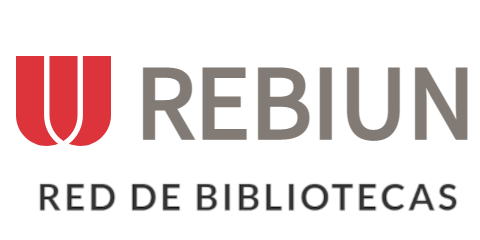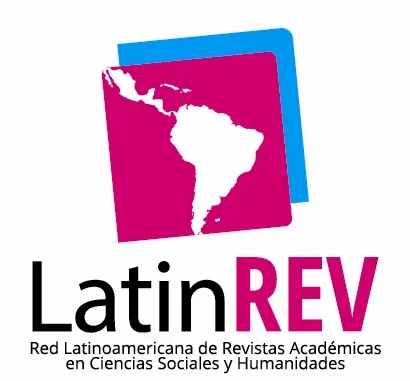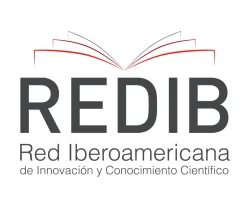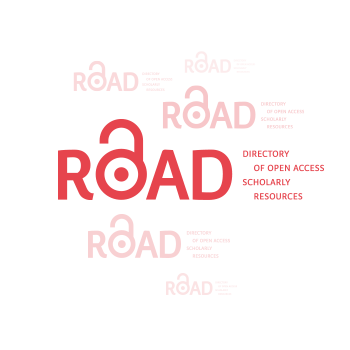Influencia de IA en los Medios Periodísticos del Ecuador
Resumen
La inteligencia artificial (IA) está transformando la industria mediática global, pero su impacto en el periodismo ecuatoriano aún requiere investigación. Este artículo examina la influencia y evolución de la IA en los medios ecuatorianos. Se realizó una revisión sistemática de literatura cualitativa utilizando Scopus, analizando publicaciones entre 2019 y 2024 sobre la influencia de la IA en el periodismo nacional e internacional. Los resultados muestran un creciente interés en la investigación sobre IA y periodismo a nivel mundial, pero pocos estudios se centran específicamente en Ecuador. Es necesario realizar más investigaciones para comprender la implementación, desafíos y oportunidades que presenta la IA para el periodismo ecuatoriano. Se requieren estudios futuros sobre la adopción de la IA en las salas de redacción ecuatorianas y sus implicaciones para el futuro del periodismo en el país.
Descargas
Citas
Aguaded, I., Civila, S., & Vizcaíno-Verdú, A. (2022). Paradigm changes and new challenges for media education: Review and science mapping (2000-2021). Profesional de la Informacion, 31(6). Scopus. https://doi.org/10.3145/epi.2022.nov.06
Almabrouk, K., & Adnan, H. (2024). Human responsibilities of investigative journalists in the digital age. Multidisciplinary Science Journal, 6(6), 2024092-2024092.
https://doi.org/10.31893/multiscience.2024092
Barredo-Ibáñez, D., De-La-garza-montemayor, D.-J., Torres-Toukoumidis, Á., & López-López, P.-C. (2021). Artificial intelligence, communication, and democracy in Latin America: A review of the cases of Colombia, Ecuador, and Mexico. Profesional de la Informacion, 30(6). Scopus. https://doi.org/10.3145/epi.2021.nov.16
Bingaman, J., Brewer, P. R., Paintsil, A., & Wilson, D. C. (2021). “Siri, Show Me Scary Images of AI”: Effects of Text-Based Frames and Visuals on Support for Artificial Intelligence. Science Communication, 43(3), 388-401. Scopus. https://doi.org/10.1177/1075547021998069
Biro, J., Linder, C., & Neyens, D. (2023). The Effects of a Health Care Chatbot’s Complexity and Persona on User Trust, Perceived Usability, and Effectiveness: Mixed Methods Study. JMIR Human Factors, 10. Scopus. https://doi.org/10.2196/41017
Brewer, P. R., Bingaman, J., Paintsil, A., Wilson, D. C., & Dawson, W. (2022). Media Use, Interpersonal Communication, and Attitudes Toward Artificial Intelligence. Science Communication, 44(5), 559-592. Scopus. https://doi.org/10.1177/10755470221130307
Calvo-Rubio, L.-M., & Rojas-Torrijos, J.-L. (2024). Criteria for journalistic quality in the use of artificial intelligence. Communication & Society, 247-259.
https://doi.org/10.15581/003.37.2.247-259
Cope, P. K. (2023). Exploring the Nexus of AI, Interactive Fiction, and Social Media for Publishing Studies. Information, Medium, and Society, 21(2 FEBRUARY), i-iv. Scopus.
https://doi.org/10.18848/2691-1507/CGP/v21i02/0-0
D’Cruz, P., Du, S., Noronha, E., Parboteeah, K. P., Trittin-Ulbrich, H., & Whelan, G. (2022). Technology, Megatrends and Work: Thoughts on the Future of Business Ethics. Journal of Business Ethics, 180(3), 879-902. Scopus. https://doi.org/10.1007/s10551-022-05240-9
Díaz-Noci, J., Peña-Fernández, S., Meso-Ayerdi, K., & Larrondo-Ureta, A. (2024). The Influence of AI in the Media Work Force: How Companies Use an Array of Legal Remedies. Tripodos, 55. Scopus. https://doi.org/10.51698/tripodos.2024.55.03
Fernández, S. P., Rodríguez-Pallares, M., & Pérez-Serrano, M. J. (2024). ARTIFICIAL INTELLIGENCE IN JOURNALISM: AN AUTOMATED NEWS PROVIDER. Index.comunicacion, 14(1), 183-205. Scopus. https://doi.org/10.62008/ixc/14/01Artifi
Gonçalves, J., Weber, I., Masullo, G. M., Torres da Silva, M., & Hofhuis, J. (2023). Common sense or censorship: How algorithmic moderators and message type influence perceptions of online content deletion. New Media and Society, 25(10), 2595-2617. Scopus.
https://doi.org/10.1177/14614448211032310
Hollander, J. B., Potts, R., Hartt, M., Situ, M., & Seto, A. (2023). The role of bots in U.S. Real estate development online communication. Computers, Environment and Urban Systems, 99. Scopus. https://doi.org/10.1016/j.compenvurbsys.2022.101918
José, F., & García-Ull, G.-U. (2021). DeepFakes: The Next Challenge in Fake News Detection. Analisi, 64, 103-120. Scopus. https://doi.org/10.5565/REV/ANALISI.3378
Lu, Z., Li, P., Wang, W., & Yin, M. (2022). The Effects of AI-based Credibility Indicators on the Detection and Spread of Misinformation under Social Influence. Proceedings of the ACM on Human-Computer Interaction, 6(CSCW2). Scopus. https://doi.org/10.1145/3555562
Mays, K. K. (2024). Authentic Impediments: The Influence of Identity Threat, Cultivated Perceptions, and Personality on Robophobia. Human-Machine Communication, 8, 205-226. Scopus. https://doi.org/10.30658/hmc.8.10
Morandín-Ahuerma, F. (2023). Ten UNESCO Recommendations on the Ethics of Artificial Intelligence. OSF. https://doi.org/10.31219/osf.io/csyux
Nichols, T. P., Thrall, A., Quiros, J., & Dixon-Román, E. (2024). Speculative Capture: Literacy after Platformization. Reading Research Quarterly, 59(2), 211-218. Scopus.
https://doi.org/10.1002/rrq.535
Blanchar Añez, F. J. (2024). Escuela Y Currículo: Propuesta Educativa Crítica Y Emancipadora Para La Formación Rural En Turismo Cultural Autosustentable . Estudios Y Perspectivas Revista Científica Y Académica , 4(2), 310–316. https://doi.org/10.61384/r.c.a.v4i2.223
Garrochamba Peñafiel , B. D. (2024). Factores de Riesgo Asociados a Diabetes Mellitus Tipo 2. Revista Científica De Salud Y Desarrollo Humano, 5(2), 101–115. https://doi.org/10.61368/r.s.d.h.v5i2.123
Cuello Brioso, N., & Sánchez, E. (2024). Barreras para la Inclusión de Estudiantes con Necesidades Educativas. Emergentes - Revista Científica, 4(1), 115–122. https://doi.org/10.60112/erc.v4i1.94
Fernández, C. (2023). Heritage Sustainability: The Symbiosis between Tourism and the Preservation of Archaeological Sites in Ecuador. Revista Veritas De Difusão Científica, 4(1), 11–142. https://doi.org/10.61616/rvdc.v4i1.40
Martínez, O., Aranda , R., Barreto , E., Fanego , J., Fernández , A., López , J., Medina , J., Meza , M., Muñoz , D., & Urbieta , J. (2024). Los tipos de discriminación laboral en las ciudades de Capiatá y San Lorenzo. Arandu UTIC, 11(1), 77–95. Recuperado a partir de https://www.uticvirtual.edu.py/revista.ojs/index.php/revistas/article/view/179
v, H., & Quispe Coca, R. A. (2024). Tecno Bio Gas. Horizonte Académico, 4(4), 17–23. Recuperado a partir de https://horizonteacademico.org/index.php/horizonte/article/view/14
Da Silva Santos , F., & López Vargas , R. (2020). Efecto del Estrés en la Función Inmune en Pacientes con Enfermedades Autoinmunes: una Revisión de Estudios Latinoamericanos. Revista Científica De Salud Y Desarrollo Humano, 1(1), 46–59. https://doi.org/10.61368/r.s.d.h.v1i1.9
Pattison, A., Cipolli, W., Marichal, J., & Cherniakov, C. (2023). Fracking Twitter: Utilizing machine learning and natural language processing tools for identifying coalition and causal narratives. Politics and Policy, 51(5), 755-774. Scopus. https://doi.org/10.1111/polp.12555
Pérez, E. J., Yagüe Jara, M.-I. D. V., Fresneda, R. G., & Guirao, P. G. (2021). Sustainable education, emotional intelligence and mother-child reading competencies within multiple mediation models. Sustainability (Switzerland), 13(4), 1-16. Scopus. https://doi.org/10.3390/su13041803
Prieto-Gutierrez, J.-J., Segado-Boj, F., & França, F. D. S. (2023). ARTIFICIAL INTELLIGENCE IN SOCIAL SCIENCE: A STUDY BASED ON BIBLIOMETRICS ANALYSIS. Human Technology, 19(2), 149-162. Scopus. https://doi.org/10.14254/1795-6889.2023.19-2.1
Sánchez-García, P., Merayo-Álvarez, N.-, Calvo-Barbero, C., & Diez-Gracia, A. (2023). Spanish technological development of artificial intelligence applied to journalism: Companies and tools for documentation, production and distribution of information. Profesional de la información, 32(2), Article 2. https://doi.org/10.3145/epi.2023.mar.08
Sjøvaag, H. (s. f.). The business of news in the AI economy. AI Magazine, n/a(n/a).
https://doi.org/10.1002/aaai.12172
Yang, K.-C., Varol, O., Davis, C. A., Ferrara, E., Flammini, A., & Menczer, F. (2019). Arming the public with artificial intelligence to counter social bots. Human Behavior and Emerging Technologies, 1(1), 48-61. Scopus. https://doi.org/10.1002/hbe2.115
Zaki Ahmed, A., & Rodríguez Díaz, M. (2022). A Methodology for Machine-Learning Content Analysis to Define the Key Labels in the Titles of Online Customer Reviews with the Rating Evaluation. Sustainability (Switzerland), 14(15). Scopus. https://doi.org/10.3390/su14159183
Derechos de autor 2024 Noemí Katiuska Salinas Parra

Esta obra está bajo licencia internacional Creative Commons Reconocimiento 4.0.













.png)




















.png)
1.png)


